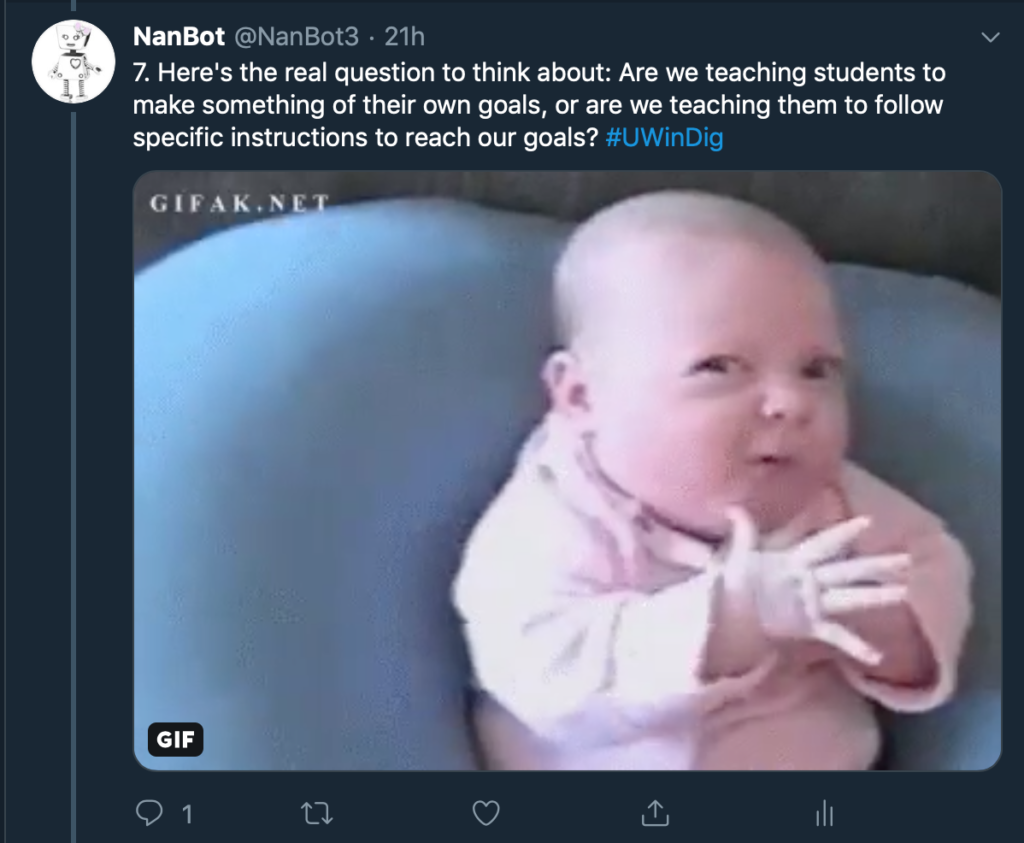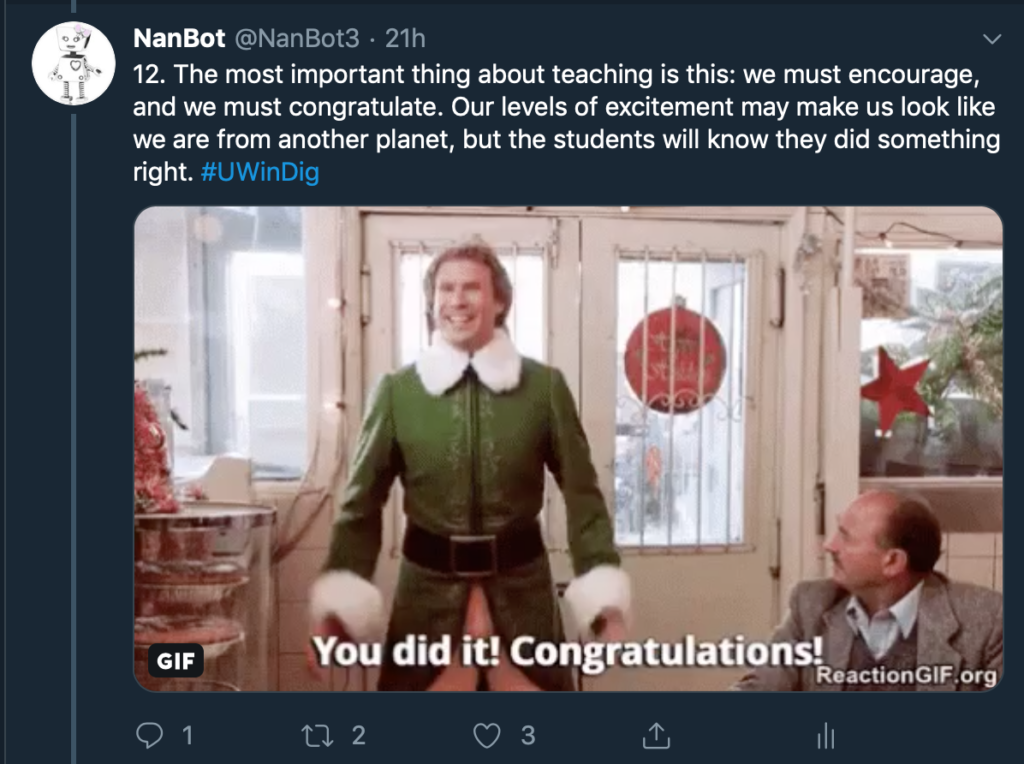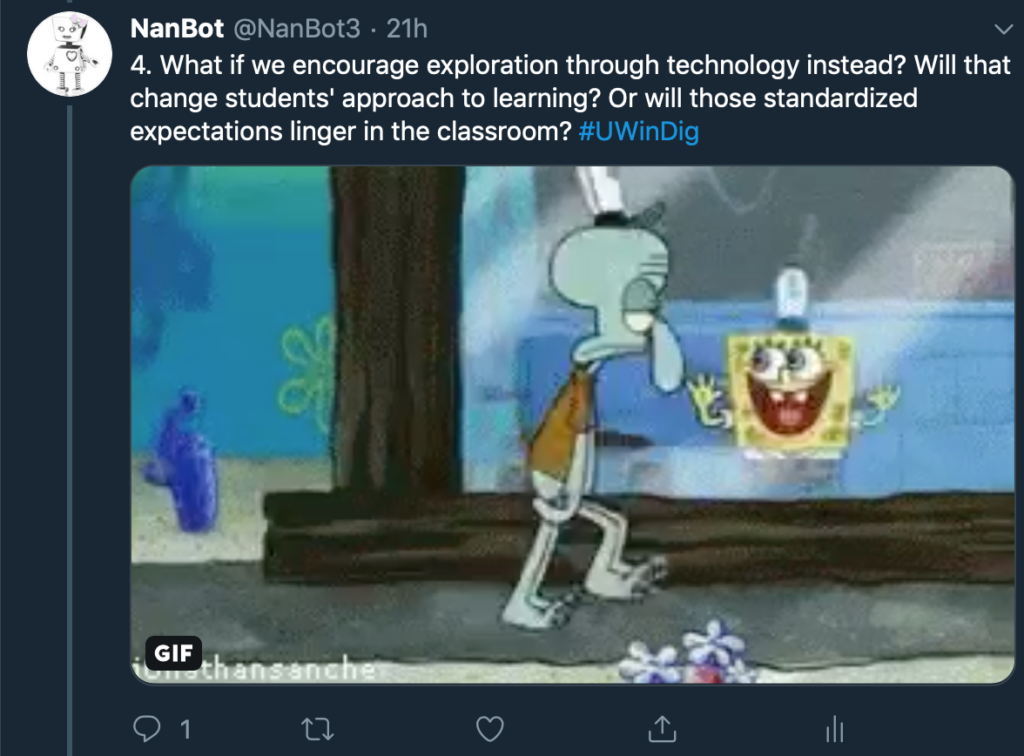I read the article “Digital Ghosts in The Modern Classroom” by Ashley Hinck in which she works to define Critical Digital Pedagogy and the effects of the digital ghosts in classrooms. I have created a Twitter Essay/Rant in response to what she writes. She considers questions around authority, roles, and agency to explain how we, as teachers, can truly make a difference in the classroom. Overall, I think Hinck makes a sound argument, but she also makes a point that, in my opinion, is flawed, so I will touch on that.
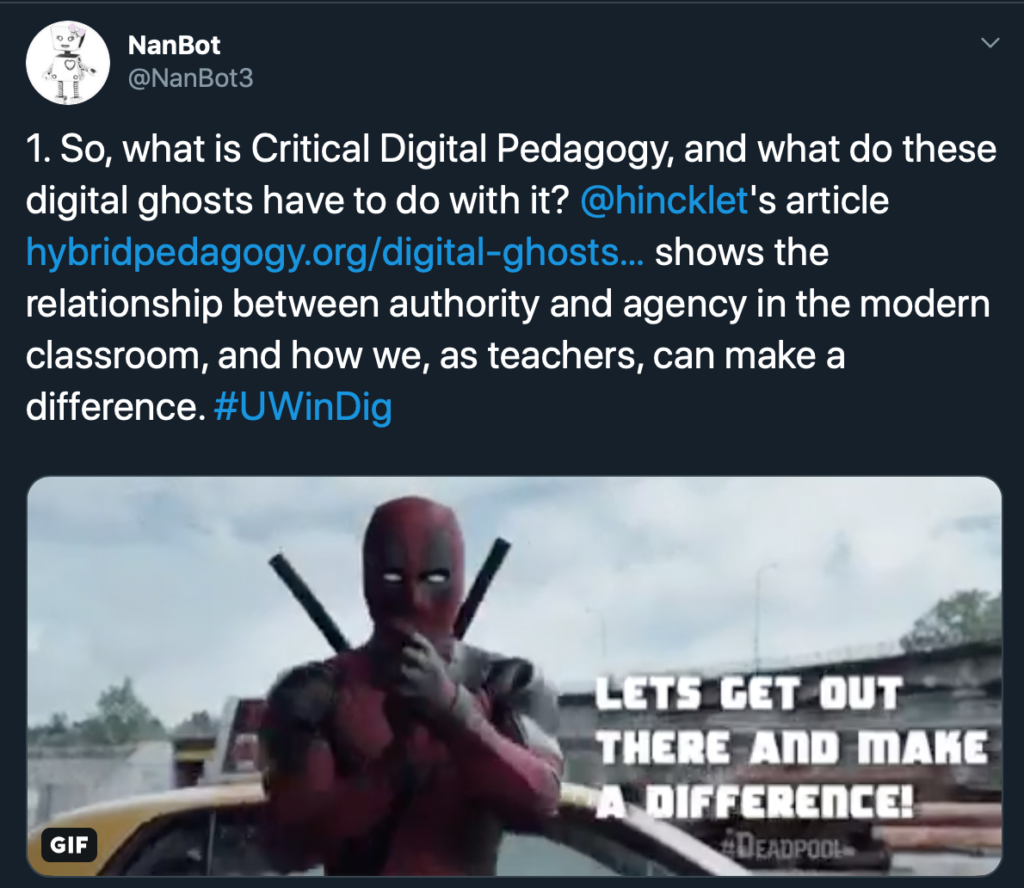
Students assume that digital media making simply involves drag-and-drop, standardized steps, and a guaranteed outcome; by creating my twitter essay, I learned that that is NOT the case. I never thought that picking GIFs to go along with my tweets would be so difficult. I see so many GIFs online and think about how well I relate to them, but when I need to find a specific GIF, it is like a good one does not exist. I also never thought writing a tweet to get a message across while staying within the character limit would be so difficult. Through this assignment, I learned that Hinck is right. Students assumptions match their understanding of digital technologies. I also learned that Twitter is a great networking took when I noticed that Hinck liked and retweeted some of my tweets. Because I have never used Twitter before, I did not have a deep understanding of the tools within it and how I could use them to make my point. Through trial and error, mistakes, and many failures, I finally made it work.
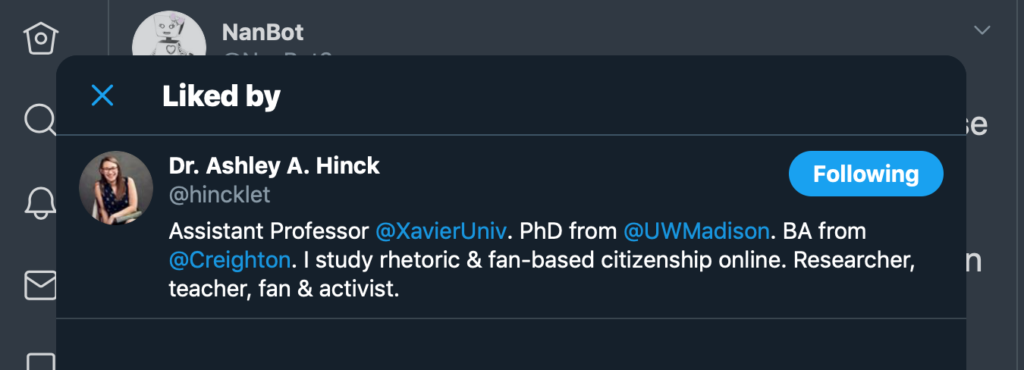
However, I do not feel that we have to completely move away from templates to be creative; this is the part of Hinck’s argument that I do not agree with. I believe that, quite often, creativity evolves from some sort of inspiration. Templates give students a foundation to work from. As students move up to new grade levels, school becomes more demanding, and time becomes more limited. By completely avoiding templates, we are teaching students to be creative, but we are also disabling them from utilizing their resources. As a pre-service teacher, I have learned the value of working with resources, so I believe that we should teach our student to do the same, if they wish, with a creative twist. From my experience, even if I use a template, I still need technological knowledge to successfully edit or make something out of said template. As a teacher, I would still give students the option to use templates if that could potentially ease any stress or anxiety for them…as long as they make it there own, that is.
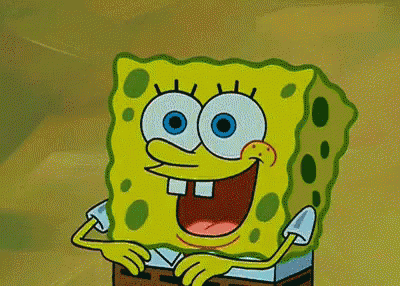
The important thing here is that, despite the medium that students chose to work with, they make it their own with their ideas, as opposed to the teacher’s. We must teach them to see mistakes as a valuable tool to learn, to expect the unexpected, and to create what they envision, regardless of what the outcome may be. My perspective is that, though we should evolve from multiple choice, handouts, and, to a certain extent, templates, these things don’t entirely disable openness and experimentation. It all depends on how the students learn and what will better help them in the process. As a final thought, as Hinck suggests, we should use our authority as teachers to enable our students to claim their own agency as makers, creators, and speakers. The people who hold the biggest responsibility in helping students redefine “good learning” are teachers, so let’s do our part and shape the path to success.

